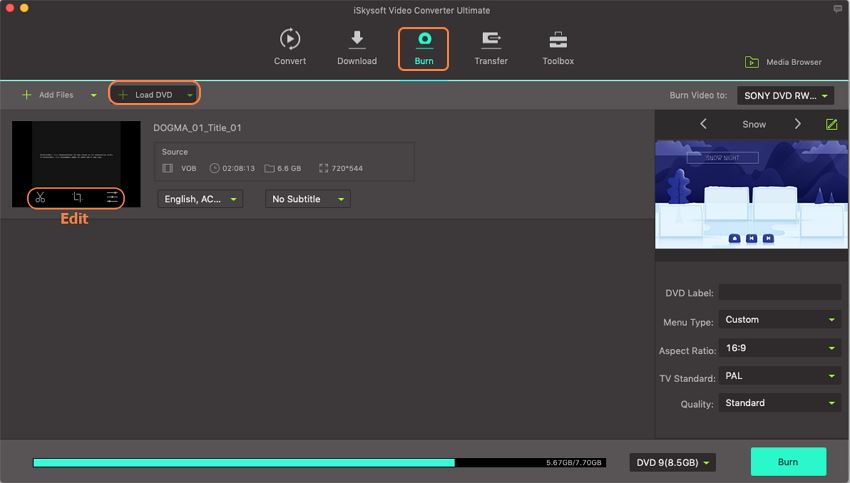

- #Pal to ntsc dvd conversion software how to#
- #Pal to ntsc dvd conversion software tv#
- #Pal to ntsc dvd conversion software mac#
- #Pal to ntsc dvd conversion software windows#
Here Aimersoft Video Converter Ultimate Windows (Windows 8 included) version screenshots are used.
#Pal to ntsc dvd conversion software how to#
How to convert PAL to NTSC video and DVD with ease Now just get the right version of the program and follow the guide below to transfer PAL DVD to NTSC format.
#Pal to ntsc dvd conversion software mac#
The Mac version is Aimersoft Video Converter Ultimate for Mac, which has the same functions as the Windows (Windows 8 compatible) version. Besides, it also serves as an video converter, video downloader and screen video recorder. With it, you can copy PAL DVD to NTSC DVD with ease. The tool to convert PAL DVD movies to NTSC is Aimersoft Video Converter Ultimate. There are many ways you can use to accomplish this task and here we will introduce the simplest way - use the Ultimate converter to convert PAL DVD to NTSC DVD.

So if you want to play a European PAL disc on an American NTSC player, you need to convert the PAL DVD to NTSC format first. The differences (See the difference between PAL and NTSC) and other reasons make PAL DVD unplayable on most American players and vice versa. Now you know what the difference between PAL and NTSC is.PAL and NTSC are two different television broadcasting systems, with PAL used in Europe and NTSC in America. The same goes for VHS players, GoPro cameras, and some other PAL/NTSC devices. As a matter of fact, PAL digital video discs seem to have an edge over NTSC discs since the PAL ones feature larger resolution pixels.
#Pal to ntsc dvd conversion software tv#
The data on a DVD are read by a DVD player and formatted for presentation on a particular TV set – either NTSC or PAL. Videos and movies are stored on DVDs with different frame rates – 24, 25, or 30 FPS as well as in different resolutions – 720 x 480 pixels for NTSC DVDs and 720 x 576 pixels for PAL ones. The only things that matter are the frame rate and the resolution. On DVDs, where there is no carrier wave-based signal encoding, the differences in frequency and lines don’t come into play. Nevertheless, some vertical color resolution is lost in the process, and colors on adjacent lines tend to blur together, though imperceptibly to the human eye.

This reversal leads to automatic corrections of phase errors in the signal transmission and, ultimately, to a higher-fidelity image. In a PAL video signal, the color information phase is reversed with each line, which is reflected in the very name of the standard (“Phase Alternating Line”). For PAL, this parameter corresponds to 625 lines, with 576 being visible (576i). NTSC delivers 525 lines, with 480 appearing visibly (which is known as 480i). It was developed in France as another alternative to NTSC and is used there and in Eastern Europe.Īnother key difference is the number of resolution lines used by each of the standards. There’s also a third system called SECAM (Séquentiel couleur à mémoire – “sequential color with memory” in French). This format, unlike NTSC, is still employed for broadcasting in the countries where it was adopted. PAL also provided the locally required picture frequency – 50 Hz. The new standard was to solve the problem by reversing every other line in a TV signal and thus eliminating errors. Designed in the late 1950s in Germany, the PAL format was supposed to deal with certain weaknesses of NTSC, including signal instability under poor weather conditions, which was especially relevant for European broadcasters. PAL (or “Phase Alternating Line”) is another video mode system for analog color television, also used in DVD and Blu-ray players. Even though modern television broadcasters switched to digital, the number of resolution lines and the frame rate they use are the same as established by the NTSC format. It was not until 1953 that a new TV standard was introduced by the National Television System Committee and named “NTSC.” This format was developed with the intention to be compatible with most TV sets in the country, whether color or black-and-white. broadcasting companies were using a wide range of methods to encode color, each of which conflicted with the others. In the 1950s, black-and-white television started to yield ground to color, and the previous technical standard became obsolete. NTSC (stands for “National Television Standard Committee”) is an analog color-encoding video system used in DVD players and, until recently, television broadcasting in North America. What is NTSC and PAL? First, let’s figure out what these standards are.


 0 kommentar(er)
0 kommentar(er)
